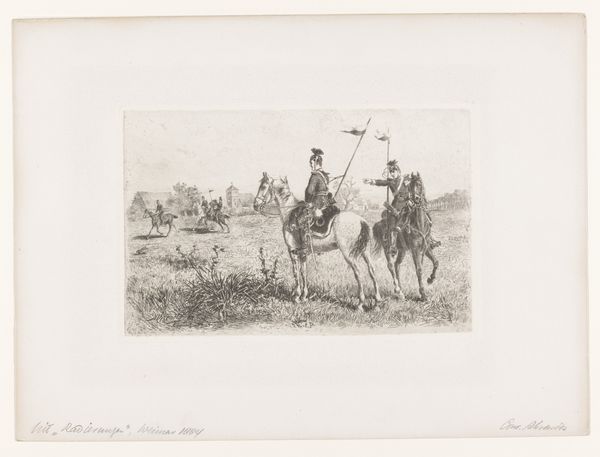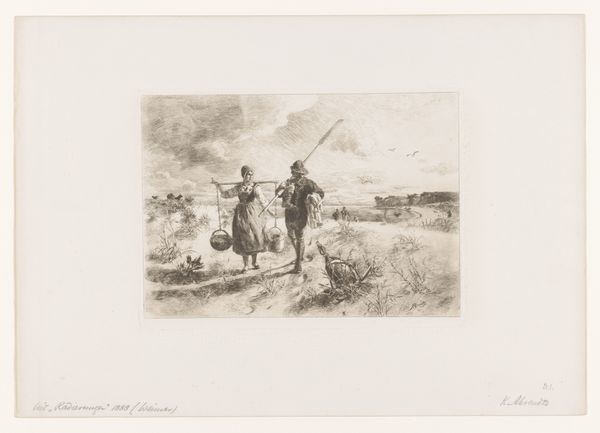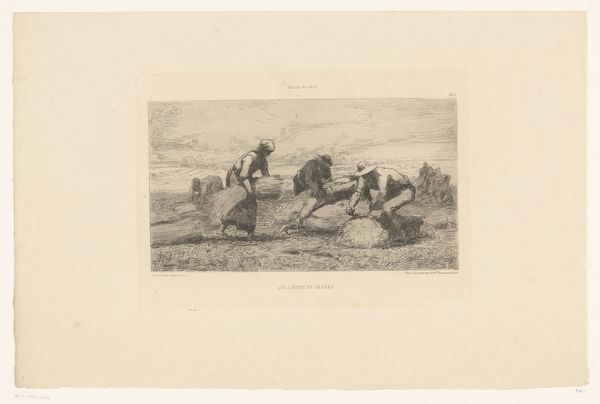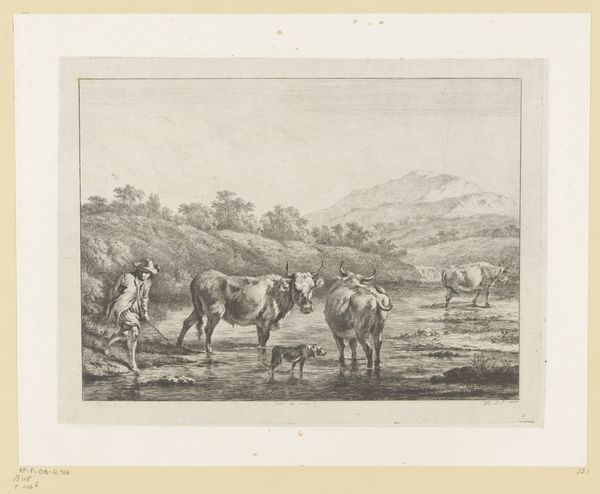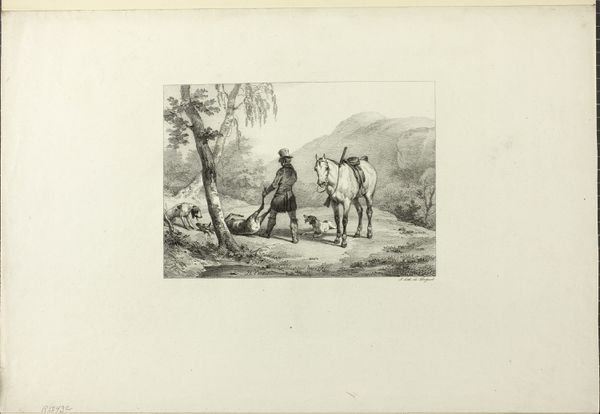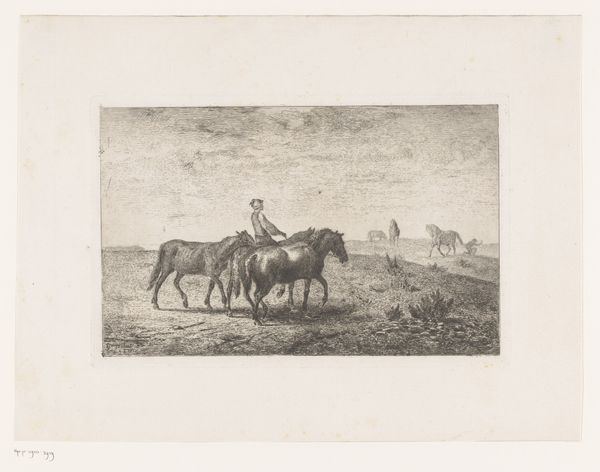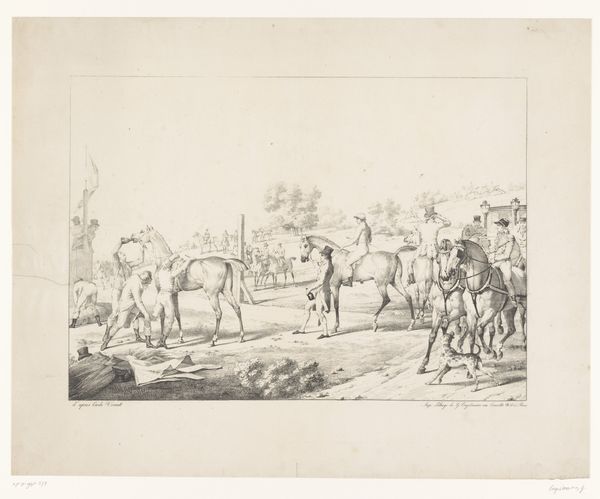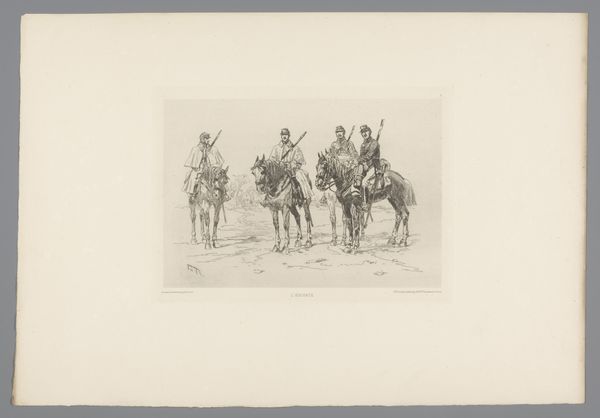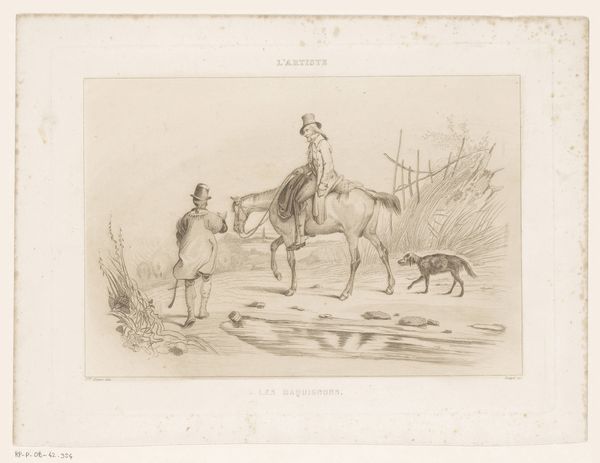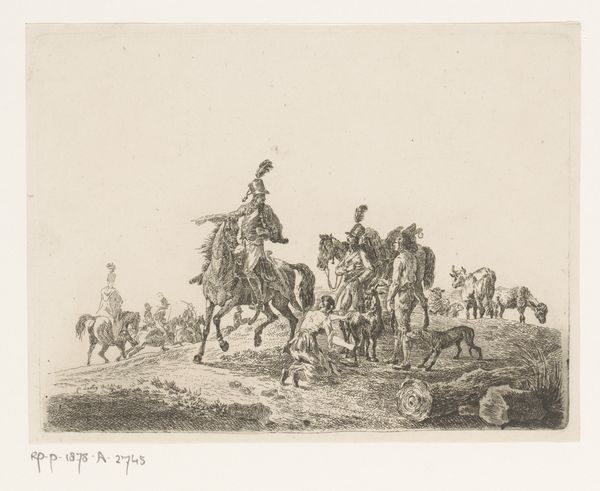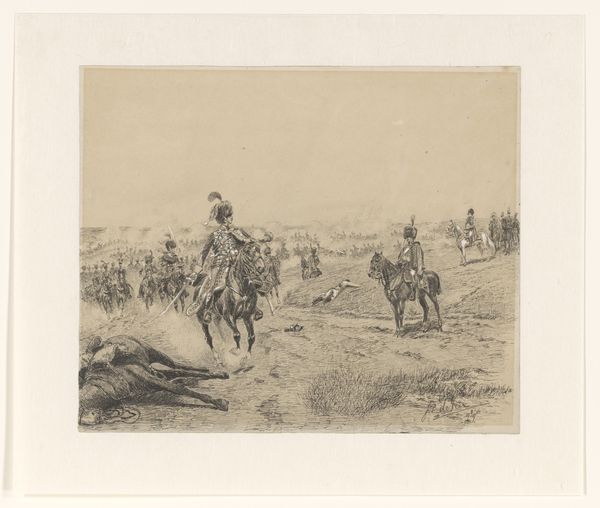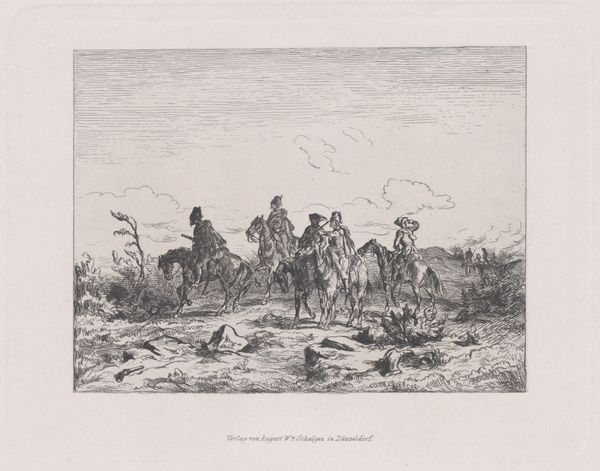
drawing, print, etching, ink
#
drawing
#
ink paper printed
# print
#
etching
#
pencil sketch
#
landscape
#
ink
#
genre-painting
#
realism
Dimensions: height 234 mm, width 346 mm
Copyright: Rijks Museum: Open Domain
Curator: Conrad Ahrendts created this print titled, "Ploegende boer wijst twee ulanen de weg te M\u00fcncheberg," or "Plowing Farmer Shows Two Uhlans the Way to M\u00fcncheberg" around 1887. It’s an etching in ink on paper. Editor: There's an immediate contrast—a stark one—between the farmer and his oxen, diligently working the land, and the two mounted soldiers disrupting this pastoral scene. It creates a powerful sense of unease. Curator: That tension is palpable. Etchings like this often circulated widely through printed media. Consider the socio-political context; genre paintings featuring laborers often idealized rural life, yet this print injects a discordant military presence. It speaks to the way war impacted even the most secluded communities, disrupting agrarian cycles and potentially impacting local economies by conscripting farmhands or requisitioning supplies. Editor: I’m drawn to the artist’s skillful manipulation of light and shadow. See how the deep blacks in the foreground gradually fade into lighter tones toward the distant town? The visual rhythm created by the repetition of horizontal lines—the furrows in the field, the horizon—guides the eye through the composition, highlighting that journey the soldiers are about to take. Curator: The physicality of the etching process reinforces that rhythm. Each line was incised into the plate, each wiping of the ink dictated the darkness. It speaks to Ahrendts’ skill in manipulating the labor-intensive technique of etching to produce subtle tones. Consider, too, how access to materials shaped production and distribution. Editor: While I appreciate the socio-economic angle, it’s hard to ignore how the composition directs our gaze. The way the figures interact – the farmer pointing, the soldier looking – builds tension. Semiotics shows that these glances reveal an unstable power dynamic, one loaded with anxiety about authority. Curator: Agreed, it’s complex. But thinking about mass reproduction, the accessibility of prints like these meant the anxieties weren’t confined to the elite. They spread, becoming a shared visual language capable of shaping opinions on labour, war, and social order. The material making of these images impacted social structures themselves. Editor: Yes, I see your point about the wider context, though it began with this deceptively simple contrast of dark and light. Curator: It’s precisely by looking closely at those material means of production, that we reveal its capacity to communicate deeper meaning within its socio-political moment.
Comments
No comments
Be the first to comment and join the conversation on the ultimate creative platform.
